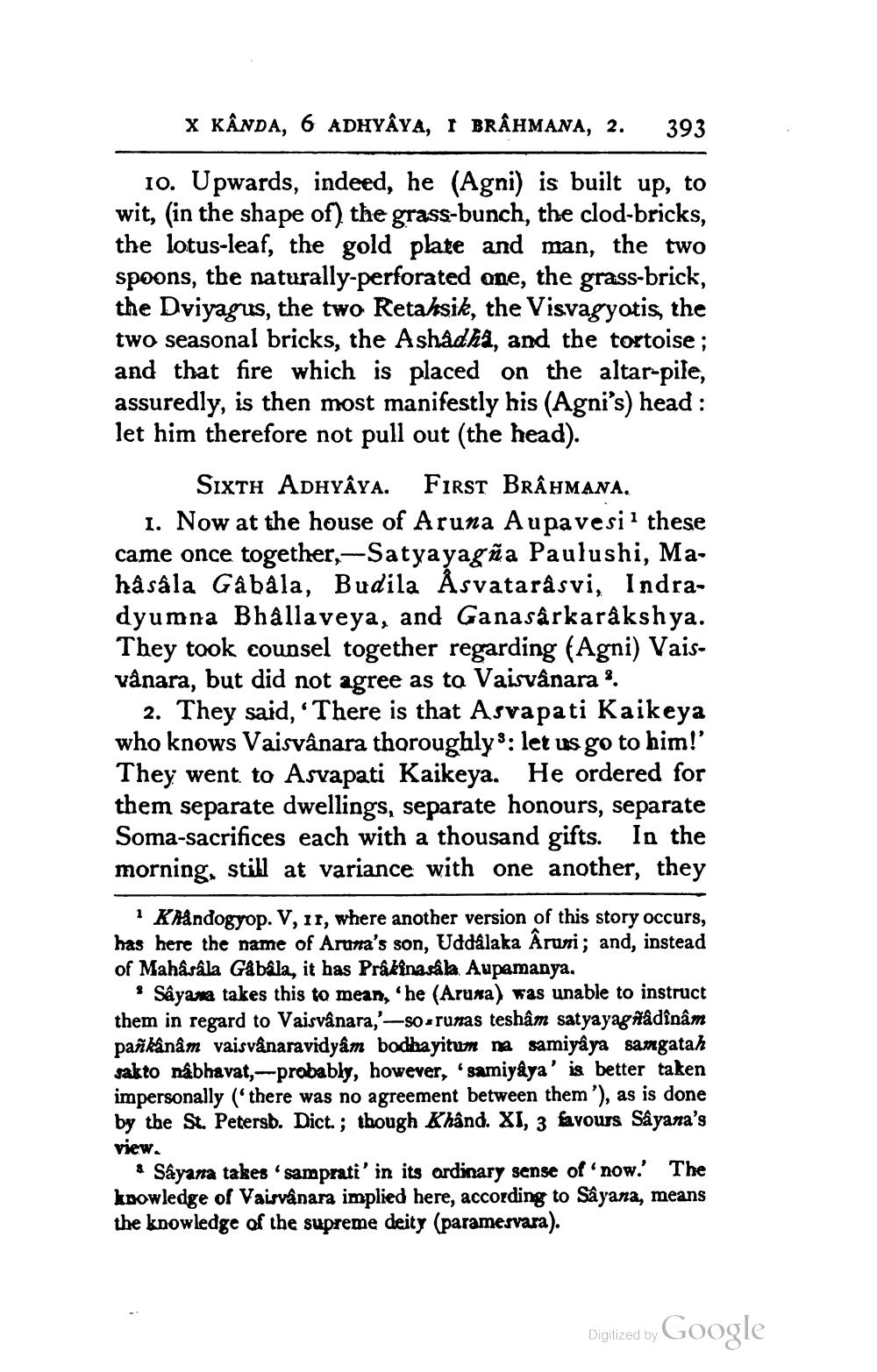________________
X KÂNDA, 6 ADHYAYA, I BRÂHMANA, 2.
393
10. Upwards, indeed, he (Agni) is built up, to wit, (in the shape of) the grass-bunch, the clod-bricks, the lotus-leaf, the gold plate and man, the two spoons, the naturally-perforated one, the grass-brick, the Dviyagus, the two Retaksik, the Visvagyotis, the two seasonal bricks, the Ashådha, and the tortoise ; and that fire which is placed on the altar-pile, assuredly, is then most manifestly his (Agni's) head : let him therefore not pull out (the head).
Sixth ADHYÂYA. First BRÂHMANA. 1. Now at the house of Aruna Aupavesi? these came once together,--Satyayagña Paulushi, Mahâsâla Gabala, Budila Asvatarâsvi, Indradyumna Bhallaveya, and Ganasärkarâkshya. They took counsel together regarding (Agni) Vaisvânara, but did not agree as to Vaisvânara
2. They said, “There is that Asvapati Kaikeya who knows Vaisvanara thoroughly': let us go to him!' They went to Asvapati Kaikeya. He ordered for them separate dwellings, separate honours, separate Soma-sacrifices each with a thousand gifts. In the morning, still at variance with one another, they
KPåndogyop. V, 17, where another version of this story occurs, has here the name of Aruna's son, Uddalaka Aruni; and, instead of Maharala Gåbala, it has Prakinasala Aupamanya.
Sâyana takes this to mean, 'he (Aruna) was unable to instruct them in regard to Vaisvanara,'-50 runas teshâm satyayag nådînâm pañkânåm vaisvånaravidyâm bodhayitum na samiyâya samgatah sakto nábhavat,---probably, however, samiyaya' is better taken impersonally there was no agreement between them'), as is done by the St. Petersb. Dict. ; though Khând. XI, 3 favours Sâyana's view.
*Sayana takes samprati' in its ordinary sense of now. The knowledge of Vaisvânara implied here, according to Sâyana, means the knowledge of the supreme deity (paramesvara).
Digitized by Google




